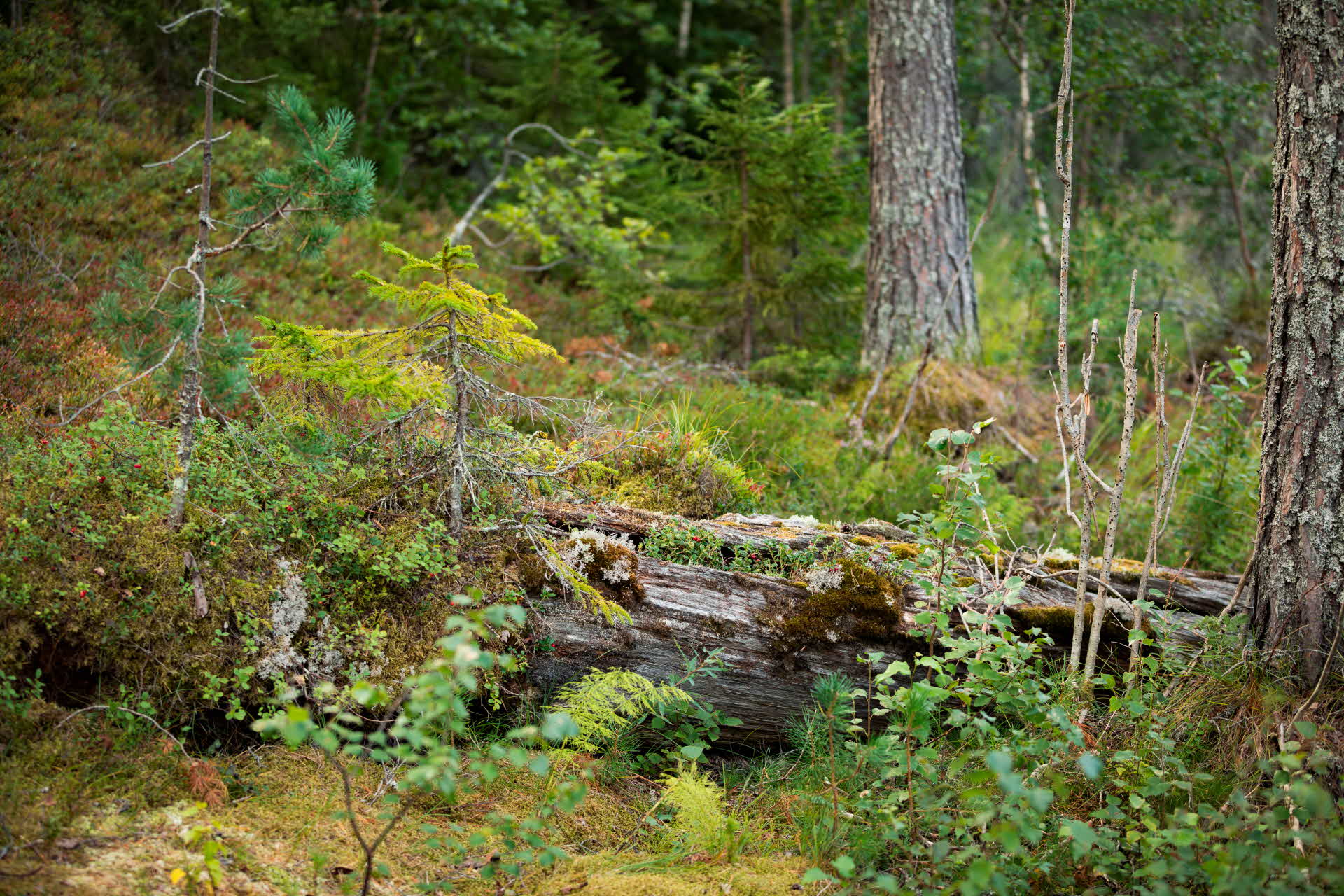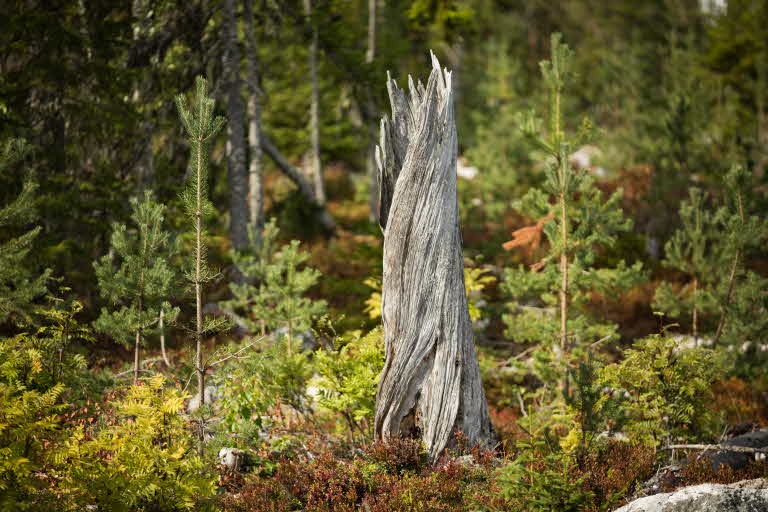
- FOREST
- SCA's FORESTS
- RESPONSIBLE FORESTRY
- NATURE CONSERVATION STRATEGY
SCA's Nature conservation strategy
In our Nature conservation strategy, we highlight the measures we take to combine productive and profitable forestry with effective nature conservation that preserves biodiversity. With the force of the forest, we contribute to a sustainable future.

SCA’s forest shall be manage they are at least as rich in biodiversity, nature experiences and raw material in the future as they are today dag and 100 % of raw material from responsible managed forest.
We will actively contribute to biodiversity by conserving, developing and restoring habitats for selected species.
We achieve this by
- Maintaining a high level of competence among all employees.
- Conducting long-term and diverse forestry with consideration for nature in all measures.
- Conserving, developing and restoring habitats that
are important for SCA’s Species Commitment from a landscape perspective. - Being resource-efficient by applying the right measures
in the right place and balancing all values of the forest, including climate benefits. - Inspiring and supporting private forest owners in practicing an active forestry with good nature conservation.
- Collaborating with authorities, research institutes and
other stakeholders.
High ambitions
Our nature conservation strategy guides us in our nature conservation management, and our ambitions are set high. This means that we will meet various certification requirements and, in some cases, exceed them, such as in our work with action programs and initiatives for waterways and wetlands.
Our strategy emphasizes the importance of active conservation measures to create valuable habitats and benefit the flora and fauna that inhabit our forests. We also place great importance on creating future value in selected areas that currently lack high nature values. Additionally, we aim to ensure high growth in our forests to generate the highest possible climate benefits.
Over 30 percent consideration for nature
In our nature conservation strategy, we specify the conservation measures we implement. Over 20 percent of our productive forest land is left as voluntary set-asides, managed with combined targets or included in the basic retention we leave during harvesting, viewed over the forest’s entire life cycle. An additional 10 percent of our forest land is exempt from forestry due to being low productive, meaning it doesn't produce much timber.
- 6% are voluntary set-asides
- 6% are areas managed with combined targets—here, we harvest some timber while also preserving nature conservation values
- 10–15% is left as basic retention during harvesting
- 10% is land with low timber production (low-productive forest land) where we do not conduct forestry